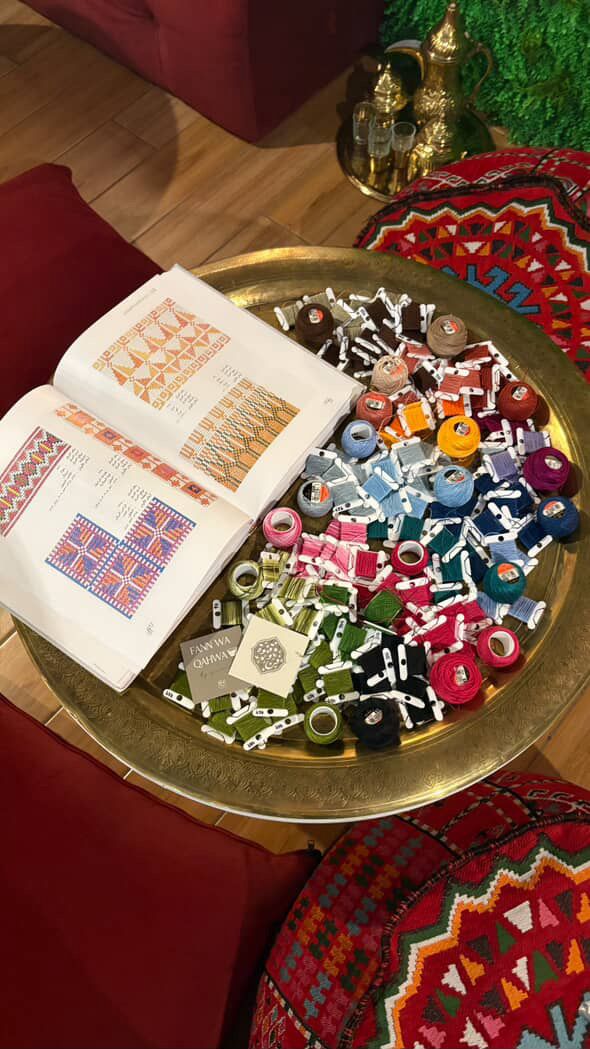Why Do We Love the Evil Eye?

For a limited time only, the two-piece Hamsa bracelet sets are making a debut at Sitti. The bracelets feature the iconic evil eye, a popularized ancient symbol regarded universally as a sign of protection from evil forces, or Ayin Ha’ra in Arabic. The evil eye is a superstitious legend that can be found in many religions and cultures all over the world. Its history is as curious as the eye itself, and dates back thousands of years of ancient tradition.
The evil eye is one of the most widely recognized and celebrated good luck charms around the world. Displayed on walls, dangling in shops and restaurants, sported on the arms of tattoo lovers and jewelry wearers, you’ve probably seen or even owned one at some point. It is hard to miss the striking gaze of the beautifully crafted, Cobalt-blue glass eye that appears to look back at you with the same curiosity. The evil eye is not actually evil despite its name. Rather, the purpose of the eye is to watchfully guard its owner by dispelling any negative forces that can manifest in misfortune or harm. With such a widespread belief of its mystical powers, it is little wonder that the evil eye remains such a powerful force in the imaginations of people and deeply rooted in their cultural practices.
The nazar (amulets) date back thousands of years with the earliest versions going back to 3,300 BC. They were first identified in excavations in Tell Brak, one of the oldest cities of Mesopotamia (modern day Syria). In early civilizations, the eye not only served to ward off evil, but was used as a symbol to convey authority and send a message of dutiful watchfulness. The evil eye was used by the Phoenicians, Assyrians, Egyptians, Greeks, Romans and, most famously, the Ottomans. Today, the evil eye amulets remain popular in the Middle East, but are also found in other countries spanning historical trade routes, including Afghanistan, Turkey, Greece and Italy.

Sometimes the evil eye is paired together with the Hand of Hamsa. The Hand of Hamsa (also known as the Hand of Fatima) is an amulet in the shape of a palm embraced by Muslims, Christians and Jews throughout North Africa and the Middle East. Similar to the evil eye, the Hand can also be traced back to ancient Mesopotamia. Archaeological digs provide evidence that both the Hand of Hamsa and the evil eye predate modern religions. The Hand is a protective talisman that is thought to bring good luck, good fortune, health and happiness. It is typically found in homes, as decorative ornaments in cars and jewelry.
Despite the passing of thousands of years since it was first conceptualized, the evil eye remains unchanged in history. Even the traditional blue colour of the eye is still commonly used today. The original blue colour comes from Egyptian glazed mud, which contains a high percentage of oxides; the copper and the cobalt together create a blue hue when baked. Although the evil eye is available in a variety of colours today, the blue remains the popular and customary choice.
At a time when ancient civilizations relied primarily on symbols such as hieroglyphics in Ancient Egypt, the evil eye was an emblem of a deep seeded belief in negative energy forces that would draw misfortune and harm. Today, the tradition of the evil eye remains steadfast. Though the basis is largely superstitious, the eye’s remarkable ability to withstand time sparks curiosity. Is there some truth to this long standing belief? Researcher Anthony Galt writes, “It’s usefulness comes not from any of the specific functions attributed to it in various cases, but rather from its flexibility of significance.” The evil eye has carried meaning by so many cultures throughout civilization, and in doing so, it has survived. Perhaps it has cultivated its own meaning for itself: resilience.
Sitti is proud to carry the exclusive Inamullumani 2-Hamsa Bracelet Set, featuring the evil eye, for a limited time. Shop our jewelry and other accessories here.


About the Author: Mariam Tokhy is a Contributing Writer for Sitti Social Enterprise. She is a graduate of York University majoring in English literature and broadcast journalism from Seneca College. She is passionate about various social causes that advocate for the protection of human rights, the environment and wildlife conservation.





Leave a comment